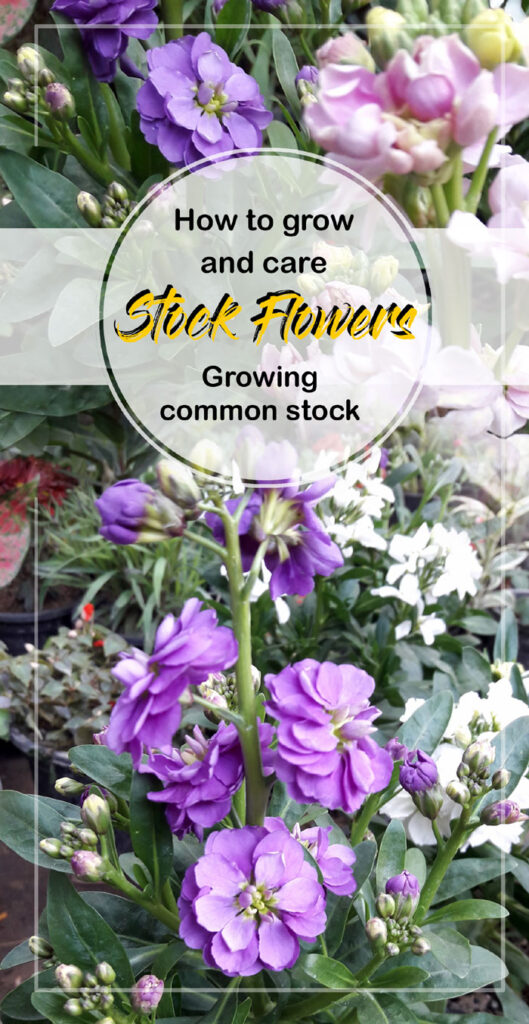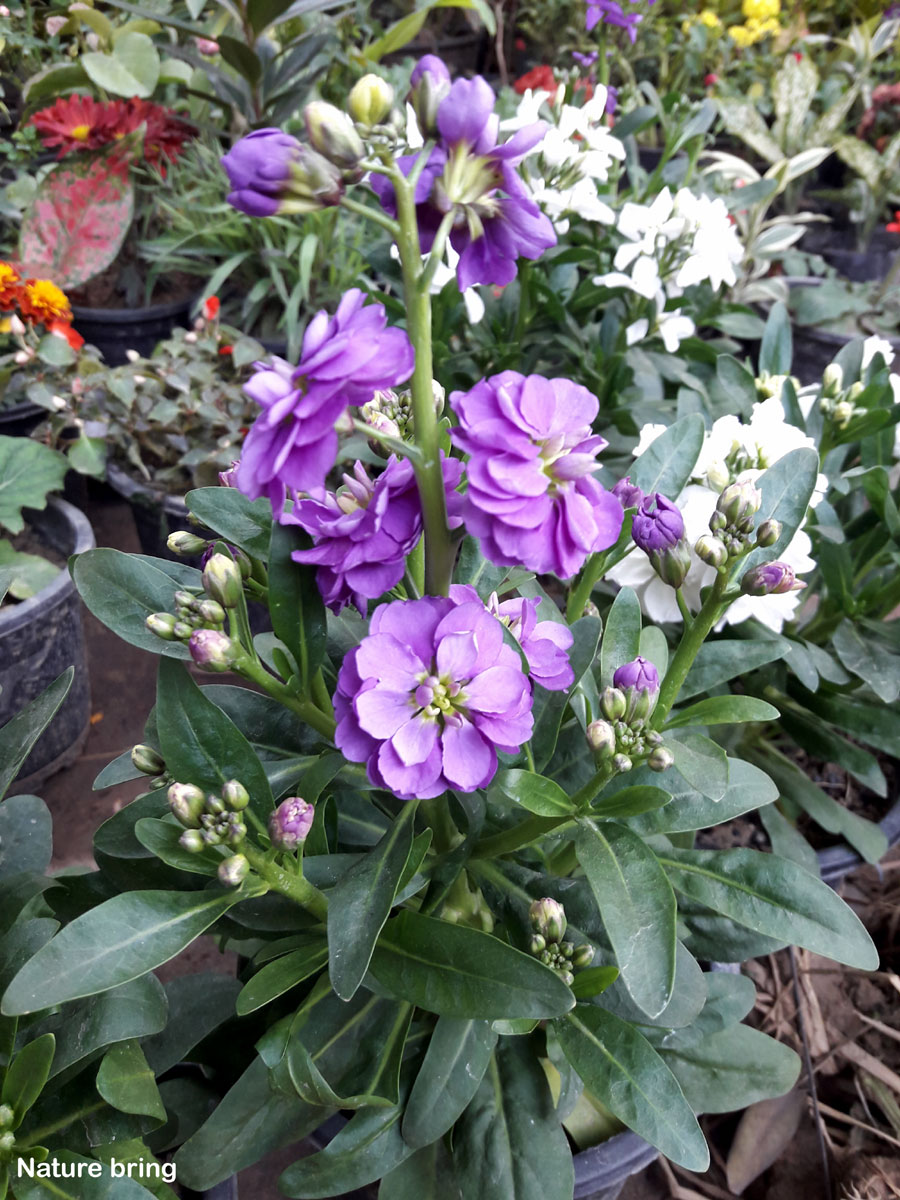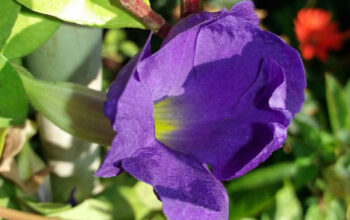Stock/ Hoary Stock Flowers
Stock, Matthiola incana, is a member of the family Brassicaceae, which includes cabbage. It is a biennial flower that is also known as the gillyflower, brompton stock, July flower, or ten-weeks stock. It is grown for its large clusters of fragrant and colorful flowers.
Stocks which are grown as annuals, or “ten-week stocks,” reach growth heights of 20 to 28 centimeters, are woody at the base, and bear many foliar scars and branches bearing leaf terminal rosettes. Starry, whitish hairs cover the plants. The leaves are round and ash-colored. They come in white, cream, yellow, pink, red, purple, or blue. On the back, the scar flaps swell. The petals are 10-12 mm in anthesis and 12-17 mm in fruit. They are 11–14 mm in length. They are thin, scary, green, or a little purple at the margins. The flowers range in color from white, pink, violet, and purple, with petals measuring 25–30 mm.
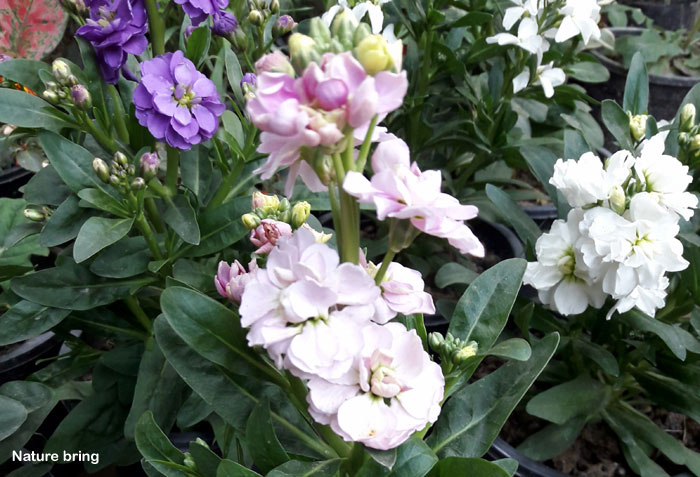
Overview Stock Flowers
Scientific name Matthiola
Common name Brompton stock, Stock Flowers, Common stock, Hoary stock, Ten-week stock.
Plant type Flowering plant
Sun Full sun to partial shade
Soil Rich, well-drained
Soil pH 6.8 to 7.5
Flower colours Pink, purple, blue, white, Bicolor, and apricot.
Blooming time Spring- Early summer
Zone 7-10
You can companion this plant with calla lilies, dianthus, iris, petunia, larkspur, pansy, and snapdragon etc.
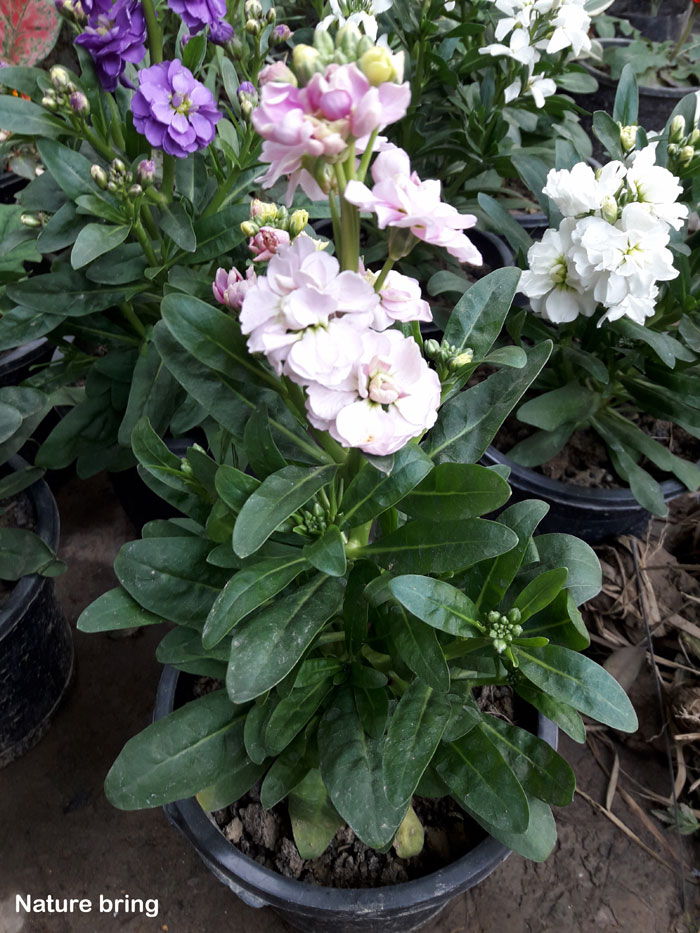
How to Grow and Care Stock/Hoary Stock Flowers
Humid climates are ideal for growing hoary stock because of its low heat tolerance and colorful blooms, so gardeners grow it inside to enjoy its unusual fragrance and colorful blooms. Hoary stock can be grown directly from seed and will bloom in the first season. It will probably help them stay healthy if they are planted among flower varieties with similar cultural requirements, such as dianthus, heliotrope, larkspur, snapdragons, and petunias.
Growing from seeds
Growing stock from seed is relatively easy, but it is advisable to sow it early in the summer so that it won’t wilt too much in the heat. Plant seeds indoors eight to ten weeks before the last average spring frost date in cool regions. For a minimum amount of disruption when transplanting to the garden, individual seed starter cells are best. Fill the potting medium with two seeds and press gently. Seeds need light to germinate, so just cover them with an eighth of an inch of soil. It is imperative to keep the cells evenly moist without overwatering, so let the cells dry out before watering again. Make sure the cells are in a sunny room that is 65–75°F. They will germinate within two weeks. In order for seedlings to bloom more densely, pinch back their budding growing tips.
Sunlight
Despite their love of full sunlight, stock flowers will thrive in partially shaded conditions as long as they get at least 2-3 hours of sun each day. Alternatively, indirect sunlight will also support their growth. It is better to expose them to the morning sun than the afternoon sun, because the hot, bright sunlight will overwhelm them.
Soil
The ideal soil for growing them is one with a neutral to slightly alkaline pH of 6.8 to 7.5 with an average to moderately rich, well-draining texture. Growing in containers may require commercial potting soil if your soil is acidic. To sweeten it, add a bit of lime or wood ash, or use an organic fertilizer.
Watering
It is important to water your plants regularly in the summer, but do not overwater, as this can cause the leaves to yellow. The young plants should be watered thoroughly and often until the stems sprout, then once or twice a week thereafter.
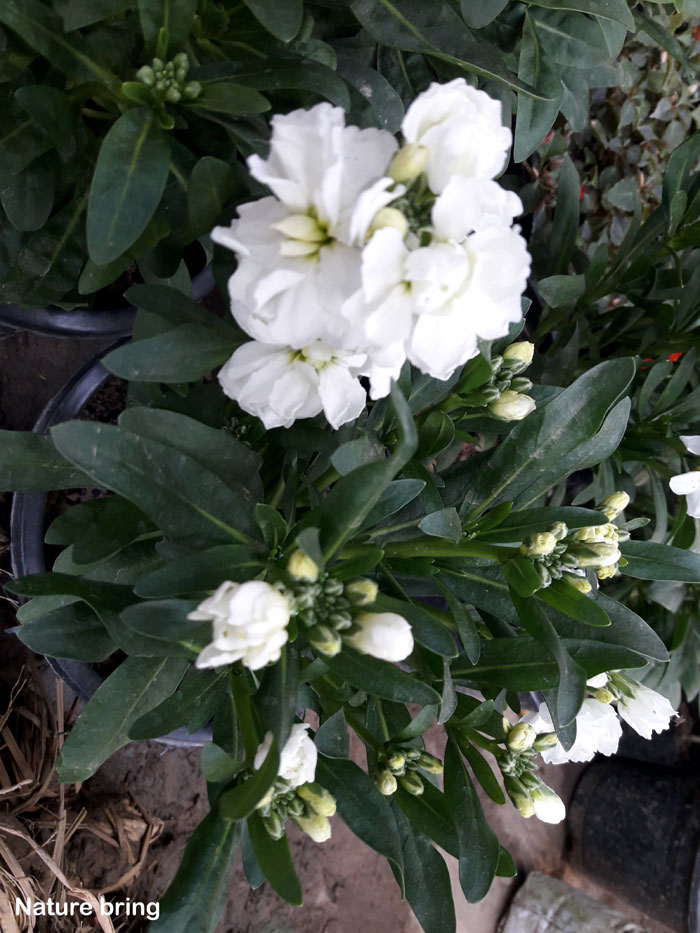
Temperature and Humidity
Stock is a cool-weather flower that blooms from early spring through summer. In warm climates, stock is considered a perennial. The hardy plants can survive for several years, growing stronger, woodier stems each year, until the summer heat eventually smothers them.
Consistently moist tropical environments are quite ideal as they do not like extreme humidity.
Fertilizer
Although Stock does not need fertilizer, it can be somewhat picky about soil. In addition to preventing weed growth, a layer of natural mulch will maintain an optimal growing environment by keeping the soil evenly moist and cool. If you fertilize once per month, use a fertilizer for flowering plants.
Pruning
Stock flowers can be deadheaded when their petals begin to wilt. This assists with keeping the plants neat and may encourage new growth and possibly more blooms. After the growing season is over, cut your plants to the ground and remove debris to prevent pests and disease pathogens from overwintering in your garden.
For pin:
